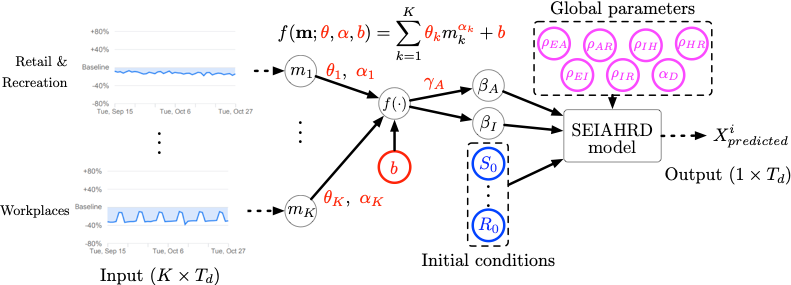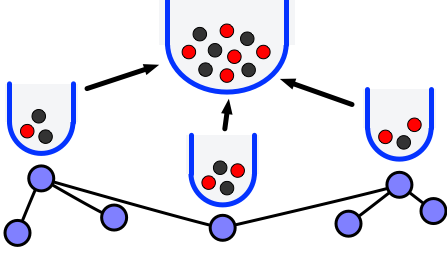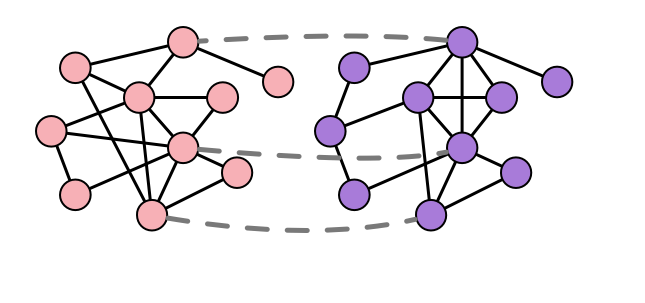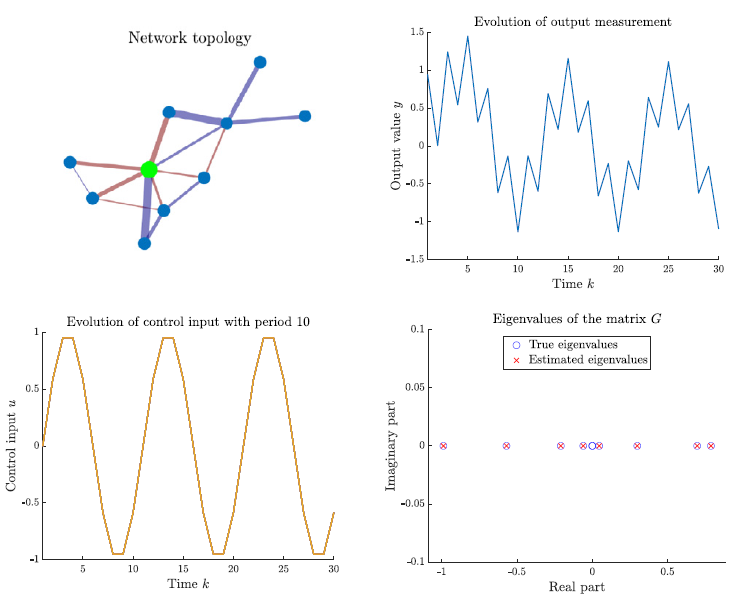Mikhail Hayhoe
applied data science, machine learning, predictive modeling, data mining
Hypergraph Learning
Machine learning on graphs with arbitrary relationships
Epidemics
Modeling, analyzing, and controlling contagion
Network Alignment
Finding correspondences between individuals in networks
Spectral Graph Theory
Analyzing networks via the eigenvalue spectrum
Hypergraph Learning
I have developed tools for robust machine learning on hypergraphs, which are generalizations of graphs where the relationships may include an arbitrary number of individuals (not just two). My algorithm has as much as a 46% accuracy improvement over baselines and competitors.
I have also produced some of the first ever robustness guarantees for hypergraph learning. I have discovered necessary properties that guarantee hypergraph learning algorithms will be stable, meaning they are not affected too much when the hypergraph is modified slightly, and will be transferable, meaning similar hypergraphs will have similar outputs.
This work can be used to show the robustness of graph neural networks for both supervised and unsupervised problems with potentially billions of nodes and edges.
View Code (WIP)
Multitask Learning & Data-driven Control
When a new disease emerges, non-pharmaceutical interventions such as lockdowns are the only effective tool to stop the spread.
Using location data from millions of unique devices and Covid-19 health outcome datasets of 3,000+ U.S. counties, I fit a predictive model using multitask learning to understand the impact of mobility restrictions on the spread of the disease across many different regions simultaneously. I then used tools from optimization, including geometric programming, to design a strategic decision-making product to produce effective COVID-19 interventions with minimal economic costs.
These tools showed that over 50 lives each month could be saved in Philadelphia alone by strategically managing lockdowns and hospital capacity.
More InfoView Code

Epidemics on Networks
Epidemics on networks are ubiquitous, from diseases like SARS-CoV-2 (COVID-19), to malware over the internet, to the spread of rumors and innovations among communities.
To model them, I designed a Polya urn-based model for epidemics on networks. I explored the predictive capabilities of this model by examining its mathematical and statistical properties, and showed how to use it to design strategies to control the spread of disease.
More Info
Network Alignment
Alignment refers to finding a correspondence between nodes of different networks, such as users across different social networks. I considered no prior information, such as known correspondences of celebrity accounts, so this is an unsupervised user clustering task.
I developed SPECTRE, which is a robust and scalable algorithm capable of solving the network alignment problem with up to 300% improvement in accuracy over competitors, even for networks with more than 50,000 users and 800,000 connections which are only moderately correlated.
More info
Spectral Graph Theory
Spectral graph theory makes use of tools from linear algebra to study the eigenvalue spectrum of networks. The spectrum can give information from resiliency, to connectedness, to controllability, and is widely used for signal processing and machine learning on networks and graphs.
I have developed tools to estimate the spectrum of arbitrary networks of dynamical agents (such as robots or power facilities) with best-in-class data efficiency, even in the presence of external inputs.
More InfoPrevious Projects
- Cryptocurrency Miner Transaction Selection
Analyzed hundreds of thousands of transactions in the Ethereum blockchain, showing miners could realize as much as a 400% increase in revenue by efficiently selecting transactions.
View Code - Reinforcement Learning of Games via Self-Play
Created a custom simulation environment and neural net architecture to learn to play the card game 400 by competing against itself.
View Code - Autonomous Mobile Networks
Designed strategies to minimize communication overhead while preserving information gathering ability.
More Info